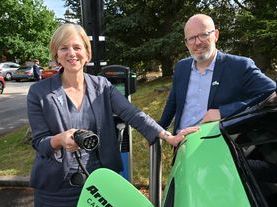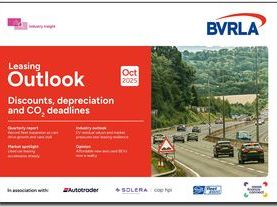The long-running vehicle supply challenges that have been suffocating the fleet sector are beginning to subside, according to new data from the BVRLA’s half-year Industry Outlook Survey. Unfortunately, the respite this provides is being compromised by a lack of parts and increasing SMR (service maintenance and repair) costs and delays.
The steady improvement to vehicle supply levels is seeing more fleet orders being fulfilled, helping to meet the growing demand being reported by many BVRLA members. 59% of respondents saw better sales transactions in Q1 2023 vs Q1 2022, providing a feeling of cautious optimism in the face of the ongoing cost of living crisis.
But this confidence is being curtailed by an array of aftermarket aggravation. A decline in parts availability – cited by 90% of respondents - is leading to prices and off-road times increasing. 92% of respondents reported an increase in vehicle downtime, compounded by an upsurge in labour costs (reported by 94% of respondents) and an aging fleet requiring more maintenance.
“For the fleet and mobility services sector, there really is no such thing as ‘business as usual’ anymore,” said BVRLA Chief Executive, Gerry Keaney.
“Hampered by Brexit, COVID, cost-inflation and carbon reduction targets, the global automotive supply chain continues to lurch from one crisis to another, with BVRLA members bearing the brunt.
"The sentiments shared in our latest report highlight this, but they also tell a story of optimism and remarkable resilience. Green shoots are appearing with vehicle supply and most of our members are seeing growing sales. We are not out of the woods, but we have every reason to believe that businesses in our sector are on the right path.”
For cars and, to a lesser extent, vans, fewer members are reporting that vehicle supply is an ‘extreme barrier’ to business when compared to August 2022. For cars, lead times of 10 months or more are no longer the norm, with deliveries improving on electric, hybrid and ICE vehicles.
The picture for vans has also improved, although more than half of orders are still taking over 10 months to reach their destination. 54% of ICE vans are being delivered 10+ months after initial order, down from 68% in August 2022, with a similar situation for electric vans (51% 10+ months vs 61% in August 2022).
The BVRLA’s Industry Outlook survey runs twice a year, culminating in the Industry Outlook Report that will be launched in December at the association’s flagship Conference of the same name. More information and the full report from December 2022 can be found at: Industry Outlook Report
Selected data from Industry Outlook Survey, July 2023
Sample base: 122 leasing and rental industry leaders
ECONOMIC LANDSCAPE
- 29% of respondents expect the economy to improve over the next six months. 21% expect it to deteriorate
- 51% have seen staffing levels increase in the last 12 months, although 56% are struggling to recruit new staff
- Since January 2023, 25% have seen an increase in the number of customers contracting them because they are having payment difficulties
- 36% say that the average age of their fleet is now more than 12 months older than in was in 2019. 89% advise their fleet is older than seen in 2019
DEMAND
- 58% expect to grow their fleet size in the next six months
- 59% saw better sales transactions in Q1 2023, vs Q1 2022
- 29% of respondents are seeing stronger demand for PCH
- 60% are seeing stronger demand for daily car rental
- 66% are seeing stronger demand for salary sacrifice
SUPPLY
- Car supply becoming less of a barrier. ‘Extreme barrier’ down
- to 23% vs 53% in Aug 2022 [BEV]
- To 30% from 59% in Aug 2022 [PHEV]
- To 28% from 64% in Aug 2022 [ICE]
- Van supply also improving, but to lesser extent. ‘Extreme barrier’ down
- To 31% from 50% for BEV
- To 31% from 50% for PHEV
- To 49% from 66% for ICE
SMR
- 92% of respondents reported an increase in vehicle downtime (61%: “Large increase”)
- 92% reported an increase in cost of parts (52%: “Large increase”)
- 94% reported an increase in cost of labour rates (47%: “Large increase”)



